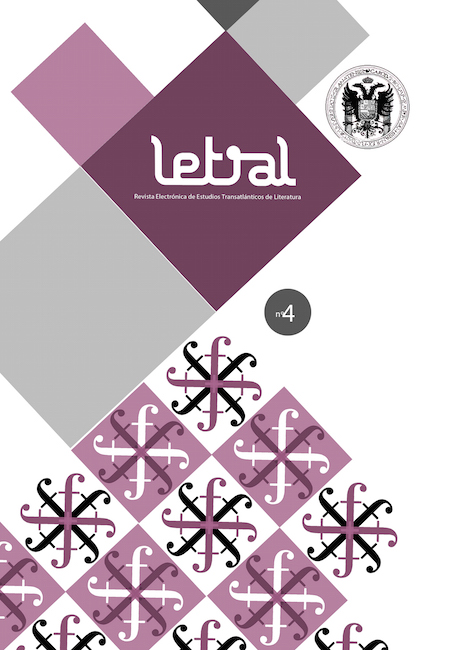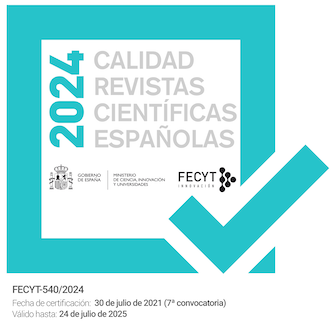La revolución como era imaginaria. Lezama y la política mito-poética
DOI:
https://doi.org/10.30827/rl.v0i4.3612Keywords:
Lezama Lima, Cuban Revolution, Ernesto Che Guevara, Myth, Imaginary ErasAbstract
In the essays of Las eras imaginarias as much as in those of La expresión americana, Lezama outlines a theory in which cultural identity is founded upon a collective vision of the poetic image in history, speaking of ‘the diverse eras where la imago imposed itself as history.’ Certain cultures that Lezama analyses, such as the Etruscan, the Carolingian, the Breton, etc. achieved this form of imaginary force. In other articles and essays, Lezama explores el potens of historic revolutions, arguing that ‘revolutions are the gravitation of the eras imaginarias.’ As is well known, the biography of Lezama during the sixties and until 1976 show areas of agreement and disagreement with the Cuban Revolution. In this paper I am not proposing to enter into this polemical biographical debate. Instead, following the declaration of Emilio Bejel that ‘in Lezama’s system, the Cuban Revolution of 1959 constitutes another great era of the image in Latin America,’ I intend to analyse the extent to which Lezama envisioned the Revolution in aesthetic, poetic and cultural terms, and to consider to what degree we can include the Cuban Revolution as another of Lezama’s eras imaginarias.Downloads
References
Barnet, Miguel, y Montejo, Esteban (1966). Biografia de un cimarrón. La Habana: Instituto de Etnología y Folklore.
Barnet, Miguel (1969). “La novela testimonio: socio literatura”. La canción de Rachel. Barcelona: Editorial Laia (1979): 125-150.
Bejel, Emilio (1991). “La historia y la imagen de Latinoamérica según Lezama Lima”. La Palabra y el Hombre: Revista de la Universidad Veracruzana 77 (Jan-Mar 1991): 129-37.
Bernáldez Bernáldez, José M. (1976). “La expresión americana de José Lezama Lima”. Cuadernos Hispanoamericanos: Revista mensual de cultura hispánica. 318: 653-70.
Bianchi Ross, Ciro (2001). “Asedio a Lezama Lima” (interview). In Lezama Lima, J. Diarios 1939-1949 / 1956-1958 (ed. de C. Bianchi Ross). La Habana: Ediciones Union, UNEAC: 121–171.
Borges, Jorge Luís (1977). Obra poética 1923-1976. Buenos Aires: Emecé).
Bueno, Salvador (1994). “José Lezama Lima entre mis recuerdos”. Ensayos sobre cubanos. La Habana: UNEAC: 389-398.
Cabrera Infante, Guillermo (1992). Mea Cuba. Barcelona: Plaza & Janes.
Campbell, Joseph (1949). The Hero with a Thousand Faces. New York: Bollingen Foundation, Pantheon Books.
Castro, Fidel (1961a). “Palabras a los Intelectuales”. http://www.cubarte.cult.cu/fidel/6.html.
—. (1961b). “Discurso pronunciado en la Reunión celebrada por los Directores de las Escuelas de Instrucción Revolucionaria, efectuada en el Local de las ORI, el 20 de diciembre de 1961”. http://www.cuba.cu/gobierno/discursos/.
Chiampi, Irlemar (2001). “La historia tejida por la imagen” introduction to J. Lezama Lima. La expresión americana (Ed. I. Chiampi). México: FCE: 9-33
DePalma, Anthony (2006). The man who invented Fidel: Cuba, Castro, and Herbert L. Matthews of the New York Times. New York: Public Affairs).
Fossey, Jean-Michel (1969). “Entrevista con Lezama Lima”. Imagen 46: 8-17.
Guevara, Ernesto (1963). Pasajes de la guerra revolucionaria. La Habana: Union de Escritores y Artistas de Cuba.
Gutiérrez Coto, Amauri Francisco (2005a). “Sobre la origenología pontiana”. Revista Vitral (Pinar del Río) 67. http://www.vitral.org/vitral/vitral67/vitral67.htm#1.
— (2005b). “Más que fábulas el pecado de los falsos mitos”. Revista Vitral (Pinar del Río) 69. http://www.vitral.org/vitral/vitral69/vitral69.htm#1.
Levinsson, Brett, (1993). “Possibility, Ruin, Repetition: Rereading Lezama Limaʼs “American Expressionʼ”. Revista Canadiense de Estudios Hispánicos, XVIII.1: 49-66.
—. (1996). Secondary Moderns: Mimesis, History, and Revolution in Lezama Limaʼs “American Expression”. Bucknell University Press.
Lezama Lima, José (2001). Diarios 1939–1949 / 1956–1958 (Ed. Ciro Bianchi Ross). La Habana: Ediciones Union, UNEAC.
—. (1970a). La cantidad hechizada. La Habana: Ediciones Unión, UNEAC.
—. (1970b). Esferaimagen: Sierpe de Don Luis de Góngora. Las imágenes posibles. Barcelona Tusquets.
—. (1972). “Función social de la literatura”. América Latina en su Literatura (Ed. César Fernández Moreno). México: UNESCO, Siglo Veintiuno Editores (1972): 462–9.
—. (1981). Imagen y posibilidad (Ed. C. Bianchi Ross). La Habana: Letras cubanas.
—. (1988a). Paradiso. (Ed. Cintio Vitier). Paris: Colección Archivos.
—. (1998b). Cartas a Eloísa, y otra correspondencia (1939-1976) (Ed. by José Triana). Madrid: Editorial Verbum.
—. (2000). Diccionario - vida y obra de José Lezama Lima (Ed. Iván González Cruz). Valencia: Generalitat Valenciana.
—. (2001). La expresión americana (Ed. I. Chiampi). México: FCE.
Mataix, Remedios (2000). “La escritura de lo posible: el sistema poético de José Lezama Lima”. Alicante: Biblioteca Virtual Miguel de Cervantes:http://www.cervantesvirtual.com/servlet/SirveObras/12493220103214428299979/index.htm.
—. (2005). “José Lezama Lima y la “Reinvención” de América”. Alicante: Biblioteca Virtual Miguel de Cervantes: http://www.cervantesvirtual.com/servlet/SirveObras/12143855418939384654213/index.htm.
Ortega, Julio (1979). “La expresión americana: una teoría de la cultura”. José Lezama Lima: Textos críticos. Florida: Universal: 66-74.
Otero, Lisandro (2001). “Para una definición mejor de Lezama Lima”. La Jiribilla 10 (July): http://www.lajiribilla.co.cu/2001/n10_julio/267_10.html.
Ponte, Antonio José (2005a). “Contra la fábula del pequeño funcionario”. Revista Vitral (Pinar del Río) 68: http://www.vitral.org/vitral/vitral68/opin.htm
— (2005b). “Una comedia del pensamiento histórico: última respuesta a Amauri Gutiérrez Coto y con ella cerramos este debate y dejamos la puerta abierta”. Revista Vitral (Pinar del Río) 79: http://www.vitral.org/vitral/vitral70/lect.htm.
Prieto, Abel E. (1991). “Lezama: entre la poética y la poesía”. Revista Iberoamericana (Pittsburgh) 57, 154 (January–March 1991): 17–24.
Rowlandson, William (2007). “Dismantling Political Mythologies: Cabrera Infanteʼs Essays of Mea Cuba”. Bulletin of Spanish Studies (University of Glasgow) LXXXIV, 4-5: 493-511.
Santí, Enrico Mario (1982). “Entrevista con el Grupo Orígenes”. Coloquio Internacional sobre la obra de José Lezama Lima 2 (Centre de Recherches Latino-Américaines, Université de Poitiers, France). Madrid: Editorial Fundamentos (1984): 157-184).
Sartre, Jean-Paul (1974). Sartre on Cuba. Westport, CT: Greenwood Press.
Simón, Pedro (Ed.) (1995). Recopilación de textos sobre José Lezama Lima. La Habana: Casa de las Américas.
Ulloa, Justo C. (1979). José Lezama Lima. Textos Críticos. Miami: Ediciones Universal.
Ulloa, Leonor A. & Ulloa, Justo C. (1998). “José Lezama Lima: configuración mítica de América”. MLN 113.2 (March): 364-379.
Vitier, Cinto (1995). “La poesía de José Lezama Lima y el intento de una teología insular”. Recopilación de textos sobre José Lezama Lima (Ed. by Pedro Simón). La Habana: Casa de las Américas: 68-90.
—. (2000). “Resistencia y libertad”. Bohemia: Revista Ilustrada de Análisis General. http://www.bohemia.cubaweb.cu/2002/jun/02semana/sumarios/historia/articulo2.html.
Yurkievich, Saúl (2002). “La expresión americana o la fabulación autóctona”. Revista Iberoamericana (Pittsburgh) LXVIII, 200 (Julio-Septiembre 2002): 815-821.
Downloads
Published
How to Cite
Issue
Section
License
Revista Letral is an open access journal under a Creative Commons Atribución-NoComercial 4.0 license.
The works published in this journal may be reused, distributed and publicly presented for non-commercial purposes, provided that: cite the authorship and the original source of the publication (journal, publisher and URL of the work).
We strongly recommended you to share our published articles in social and scientific networks, institutional and public repositories, personal or institutional websites, blogs, Google Scholar, ORCID, ResearchID, ScopusID, etc.
The journal allow the author(s) to hold the copyright and to retain publishing rights without restrictions.
We are completely free, both for readers and authors.














